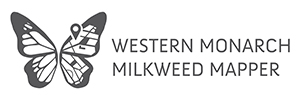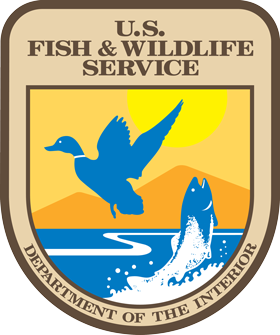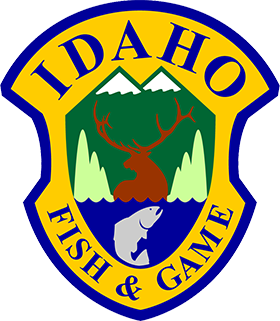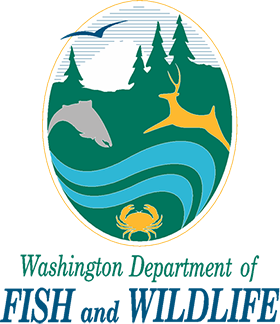Much of what we know about monarch biology is due to the amazing efforts of community scientists! There are a number of complementary projects, spanning everything from estimating monarch population sizes at California overwintering sites to documenting monarch migration and milkweed phenology. Check out the projects below to find other ways to get involved in monarch research and conservation in the US and Canada.
Please note: WMMM regularly shares data with the following programs when possible. However, we encourage all participants to submit data directly to the community science program they participate in. Many of these programs, including the Western Monarch Milkweed Mapper, can also be accessed through the Monarch SOS app, available through iTunes. Also, participants can now submit data to the WMMM using the iNaturalist app (available in Google Play Store and iTunes), joining the iNaturalist project for the Western Monarch Milkweed Mapper, and then adding observations to the project.
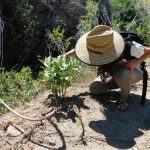
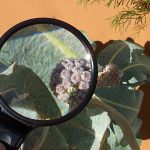
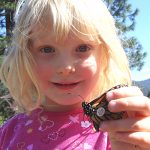
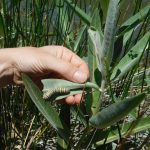
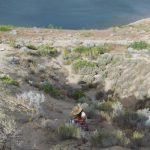
Photos (from left to right): Emma Pelton/Xerces Society, Tony Frates/flickr CC BY-NC-SA 2.0, Linda Kappen, Emma Pelton/Xerces Society, and Emma Pelton/Xerces Society.
Western Monarch Mystery Challenge
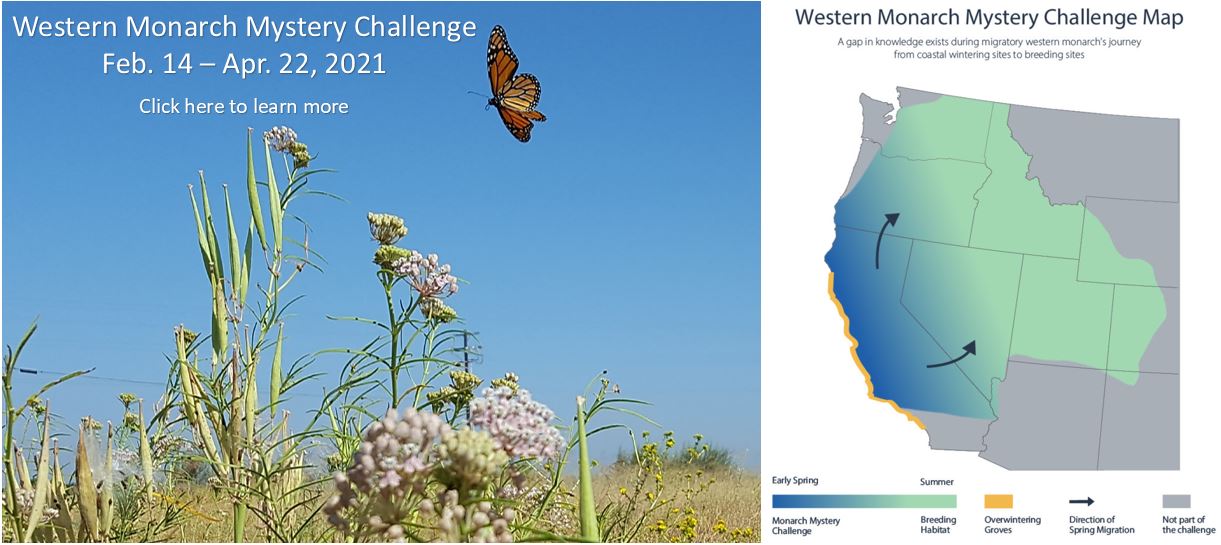
The Western Monarch Mystery Challenge was a community science campaign that occurred from February 14th through April 22nd 2021. This campaign was formed by researchers from Washington State University, Tufts University, UC Santa Cruz, and the Xerces Society to learn more about monarchs during the spring months in order to inform urgent conservation efforts. While this official project has ended, we encourage you to continue to look for and report monarchs during the spring (February-April) in California, or anywhere in the Western United States. For questions about this campaign, please contact us wmmm@xerces.org.
How to participate:
-If you see a monarch outside of overwintering groves in the spring (Feb-April) take a picture! (don’t worry, it can be far away and blurry), and submit it to the Western Monarch Milkweed Mapper or the associated iNaturalist project (info to link to iNaturalist below).
Learn more about this project here or read this educational handout.
Western Monarch Milkweed Mapper iNaturalist Project
North American-Wide Monitoring
Integrated Monarch Monitoring Program
This monitoring program is a tri-national initiative led by the Monarch Conservation Science Partnership to monitor monarch populations and habitat throughout their breeding range. Training is recommended prior to participating; in-person training is offered each spring and online training and protocols are available on their website. Data gathered through this effort are used to inform local, regional, and national conservation efforts.
International Monarch Monitoring Blitz
The International Monarch Monitoring Blitz aims to provide a valuable snapshot for scientists of the monarch population status across the butterfly’s migratory paths in Canada, Mexico, and the United States.
For one week, the Blitz invites people across North America to look for milkweed plants and survey them for monarch eggs, caterpillars, chrysalises and butterflies. This information will help researchers identify priority areas for monarch conservation actions. Data gathered during the Blitz is uploaded to the Trinational Monarch Knowledge Network, where it is accessible for anyone to consult and download.
What migration paths do monarchs take?
Tracking the Monarch Migration
When do monarchs first arrive in the spring? First lay eggs?
Journey North – Monarchs
A community science program that allows participants to report observations of migrating monarchs to real-time migration maps. These maps also track first monarch eggs, first monarch larvae, and first emergence of milkweeds across the country.
Monarch Alert
Tagging and monitoring program based at Cal Poly in San Luis Obispo, California. The program focuses on tagging monarchs at California overwintering sites to study movement between sites and spring migration.
Monarch Butterflies in the Pacific Northwest
Tagging program based in the Pacific Northwest. Online portal to post tag recoveries and other reports of PNW monarch sightings as well as share butterfly research and conservation news.
Southwest Monarch Study
Tagging program based in the Southwest. SWMS also holds workshops, monitors milkweed populations, identifies breeding habitat, and encourages establishment of monarch habitat.
Monarch Watch provides tags for the Eastern U.S.
Mapping Milkweed and Monarch Occurrences
Mission Monarch
Mission Monarch is a scientific project dedicated to monarch conservation through research, citizen science and education in Canada. Community scientists can participate in a Mission Monarch bioblitz to get training and monitor monarch eggs and caterpillars in the field.
Monitoring Milkweed Stands for Phenology, Survivorship, and Parasitism
Monarch Larva Monitoring Program
The MLMP is a community science project of the University of Minnesota’s Monarch Lab. Volunteers in the U.S. and Canada monitor milkweed stands weekly to count monarch eggs, larvae, and pupae in order to better understand how and why monarch populations vary in time and space. Data collected from this effort have been used to determine the phenology of breeding in different areas, survivorship rates from egg to 5th instar larvae, year to year and site to site changes in monarch densities, the number of monarchs produced (on average) by a milkweed plant, and rates of parasitism.
Monitoring Overwintering Monarchs in California
The Xerces Society’s Western Monarch Thanksgiving Count
Every winter, monarch butterflies gather by the dozens, hundreds, and even thousands at more than 200 overwintering groves up and down the California coast. A dedicated group of ccommunity scientists monitor these groves each year, gathering information on habitat conditions and estimating population numbers. The highlight of this effort is the annual Western Monarch Thanksgiving Count (WMTC), which takes place for three weeks around the Thanksgiving holiday.
Monitoring Monarch Parasites
Project Monarch Health
Participants in Project Monarch Health help researchers monitor monarchs for the parasite Ophryocystis elektroscirrha (OE). Volunteers press a small clear sticker to monarch abdomens (procedure doesn’t harm monarchs) and then submit the samples to the project’s lab in Georgia, where they are analyzed for parasite load and added to a growing dataset of monarchs sampled across North America. To receive a free kit and participate in this effort, email monarchhealth@gmail.com, their website, or follow them on Facebook at Project Monarch Health.
Rearing Monarchs
Rearing monarchs is not a conservation strategy for the species. However, captive rearing a few (<10) monarchs for education can be a great opportunity to see their life cycles up-close (although watching them in the wild is even better!). If you are rearing monarchs for community science projects such as tagging, monitoring parasites, or OE levels, you should still keep the numbers of butterflies you raise low. Never buy, ship, or move monarchs long distances. To learn more about this issue, read the blog “Keep Monarchs Wild!” and Monarch Joint Venture’s hand out “Rearing Monarchs: Why or Why Not?”.
